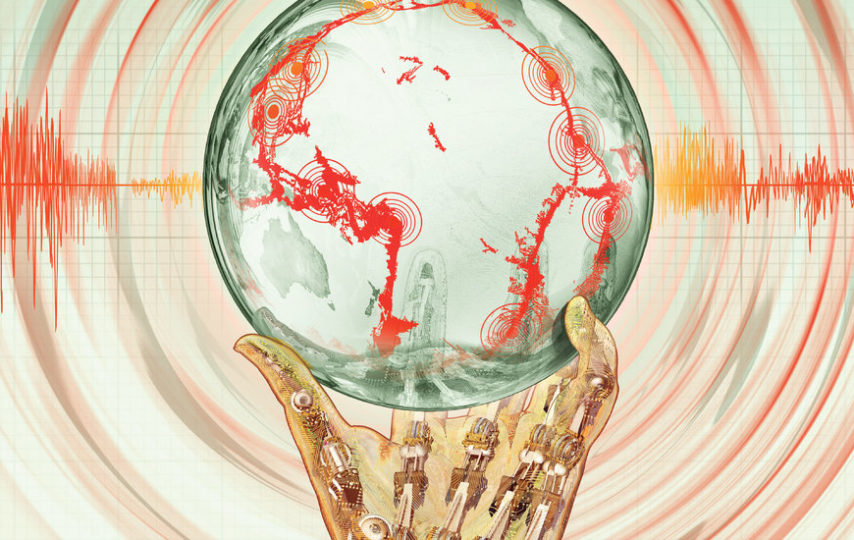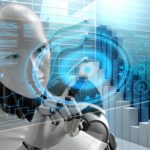Artificial intelligence (AI) is increasingly more common in everyday society. People depend on it to help them get information from the voice assistant feature on their phones, for example. The innovations brought about by AI could also play a role in safeguarding people from the destruction of natural disasters.
Substantial improvements have occurred in the realms of tornado and hurricane forecasting, but there’s still a lot of room for improvement regarding forecasting earthquakes. That’s why researchers are turning to some of the same AI technology that trained the digital assistants used by Amazon and Google to get help anticipating them.
- A Substantially Improved Method
One of the unfortunate things about earthquakes is that human activities can help trigger them. For example, Oklahoma is not historically known for having earthquakes but is now experiencing them. Researchers believe that wastewater disposal from the state’s fracking industry caused the shift, and they know that Oklahoma doesn’t have the tools to forecast earthquakes like other, more earthquake-prone places do.
But, when scientists started depending on AI for forecasting, it found that the method predicted 17 times more earthquakes than other options. It also received those results more efficiently. The voice assistants built into popular smart speakers filter out background noise to listen for the commands that they know. The application of this kind of AI to earthquake detection works similarly.
When analyzing the likelihood of an earthquake, seismologists have to ignore something called ambient seismic noise. It occurs as part of the Earth’s normal behavior. Researchers trained an AI algorithm by exposing it to seismically quiet areas. Once the technology understood what that information sounded like, it could filter it out and listen for activity that differed from the norm.
As a result of that training, the tech learned to spot earthquake signals that human eyes couldn’t see. It could also determine the approximate locations of individual earthquakes.
- Studying AI to Find an Earthquake’s Epicenter
An earthquake’s epicenter is the point directly above the point in the Earth’s crust where a seismic rupture happens. It’s also typically the place where the most damage takes place. The work mentioned above, where scientists relied on voice recognition AI to detect earthquakes, is impressive. But, it’s not the only way that scientists use AI for earthquake forecasting.
Another group of researchers tapped into the power of AI to study the arrival times of seismic waves. After getting that information, they can determine the location of the epicenter. The scientists say that their trained neural network evaluates the data with the same amount of precision as an experienced seismologist. The researchers also noted that the accuracy was consistent whether the data set is large or small.
Moreover, tracking the phases of seismic waves as this AI technology can do is useful for helping scientists predict aftershocks. That’s crucial since the severity of aftershocks can be more substantial than the main earthquakes. Usually, predicting the phase times is something seismologists do manually. But, if AI can do it as well as experts, and without unnecessary delays, such progress could forever change earthquake predictions.
- Innovation Does Not Remove the Need to Scrutinize Information
The examples of using AI to predict earthquakes and their characteristics should make people feel hopeful and excited about the future. However, when learning about any outstanding new technologies or applications, individuals must always be careful to take the time to see the full picture. Far too often, people get so excited about flashy data visualizations or mind-blowing statistics that they don’t look closely enough at the all-important details.
Some people who show data to their audiences mislead or misinform them through various tactics like charts or graphs with disproportionate scaling, colors that give viewers incorrect impressions or visuals that don’t tell the whole story. That’s not to imply that the researchers mentioned here engaged in suspicious practices during their investigations.
It’s merely a reminder of how people need to take it upon themselves to look deeper and not automatically believe everything they hear or read. The New York Times recently published an investigation about a company called One Concern. The businesses found a marketable way to apply AI to disaster response. It analyzed information to determine where disaster victims most needed help and how to reach them in time.
If the interface gave accurate, trustworthy information, it could provide much-needed guidance that could save lives during the aftermath of earthquakes and other natural disasters. But, an examination of the company showed its information and simulations fell short. The platform often based too many predictions on residential census data, which left users in the dark about many commercial establishments affected by disasters.
San Francisco officials were among One Concern’s early adopters. But, the city pulled out of its contract early due to fears of inaccurate data. In one instance, a building in Seattle that was specially designed to withstand earthquakes still appeared significantly damaged in One Concern’s simulated models. People who formerly worked at the company also say that One Concern inflated statistics about the accuracy of its tools.
- Detecting Earthquakes Earlier
The information in the previous sections highlights some of the ways to apply AI to earthquakes. That kind of information frequently gives seismologists the information they need to understand more about an earthquake’s characteristics.
But, other ways to get informed don’t involve studying the earthquakes. A team at Tokyo Metropolitan University developed an AI neural network to take local estimates of the Earth’s magnetic field.
Both earthquakes and tsunamis accompany associated localized changes in the magnetic field. But, the magnetic field always fluctuates. Noticing a problem requires knowing what’s normal for a specific location. Researchers trained their neural network on half a million data points and say that it could allow earthquake experts to give earlier warnings about these events. Then, people have more time to seek safety.
- Progress Is Happening
Most of the examples here involved using AI for earthquake detection in the lab. Scientists are moving in the right direction as they apply AI in these unprecedented ways, and the achievements are encouraging. However, it’ll still be necessary to ensure the validity of the information persists in real-world situations before becoming heavily dependent on it.







